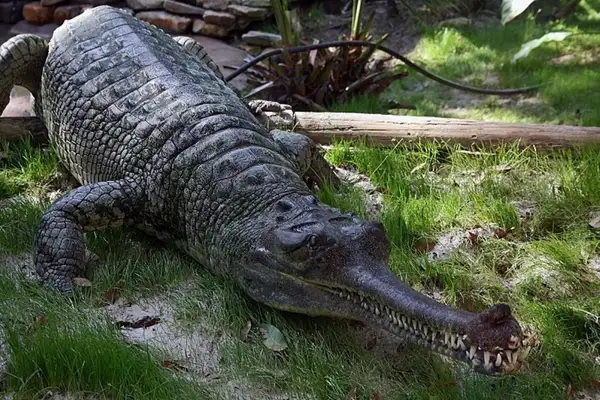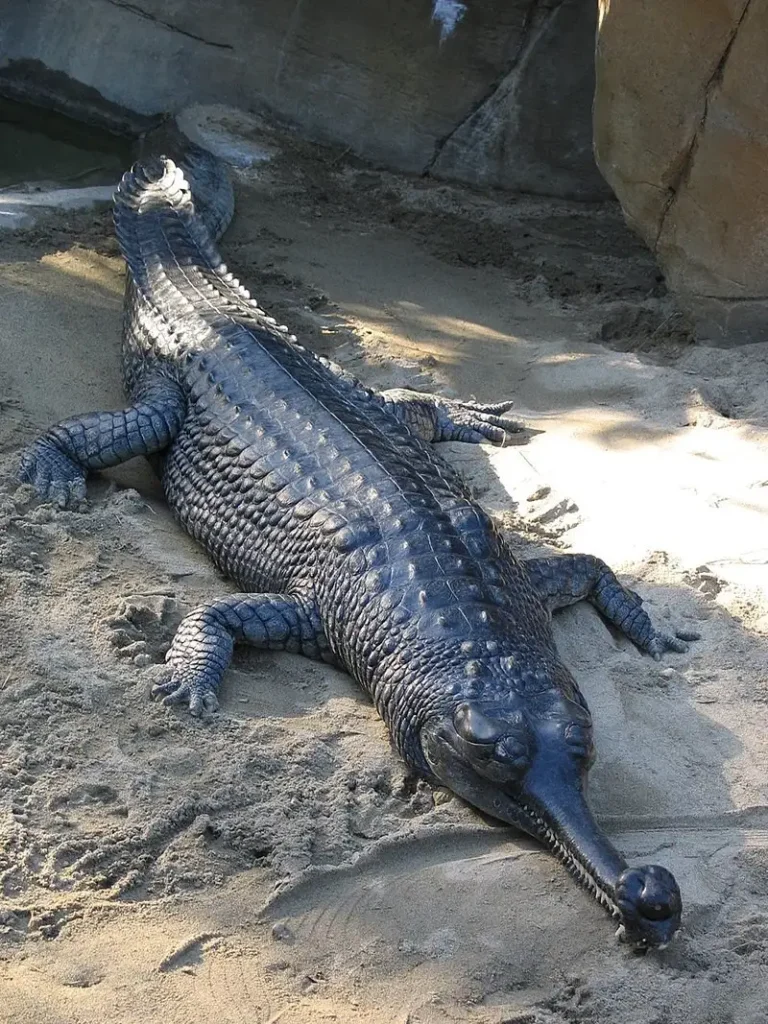Indian gharial, also known as the fish-eating crocodile, was recently spotted in Greater Kaziranga after a 75-year absence.
About Indian Gharial:
- The gharial (Gavialis gangeticus), also known as gavial or fish-eating crocodile, is a crocodilian in the family Gavialidae and among the longest of all living crocodilians.
- Diet: Gharials are primarily piscivores, meaning they mainly feed on fish.
Characteristics:
- The gharial is olive-coloured, with adults being darker than young, which have dark brown cross bands and speckles.
- Adult males have a distinct boss at the end of the snout, which resembles an earthenware pot known as a ghara, hence the name “gharial“.
- The gharial has a distinctive long, slender snout that sets it apart from other crocodilian species.
- The snout is adapted for catching fish.
Habitat:
- It is the most thoroughly aquatic crocodilian, and leaves the water only for basking and building nests on moist sandbanks.
- They prefer deep, clear, fast-flowing waters with steep, sandy banks.
- They historically ranged from rivers of Bangladesh, Bhutan, India, Myanmar, Nepal and Pakistan.
- They are now mostly found in the fresh waters of the Himalayan Rivers of India and Nepal.
- The surviving population can be found within the tributaries of the Ganges river system: Girwa (Uttar Pradesh), Son (Madhya Pradesh), Ramganga (Uttarakhand), Gandak (Bihar), Chambal (Uttar Pradesh, Madhya Pradesh and Rajasthan) and Mahanadi (Orissa).
Threats
- Gharial populations have declined by as much as 98% since the 1940s due to human activities like hunting, dam-making, and illegal sand mining from riverbanks.
- These activities destroy their habitats and nests, forcing them to abandon their basking sites.
Conservation:
- Gharial reserves in India are located in the states of Uttar Pradesh, Madhya Pradesh, and Rajasthan.
- Conservation status: IUCN (Critically Endangered), Wildlife Protection Act, 1972 (Schedule I), and CITES (Appendix I).
Ref: Source
| UPSC IAS Preparation Resources | |
| Current Affairs Analysis | Topperspedia |
| GS Shots | Simply Explained |
| Daily Flash Cards | Daily Quiz |



